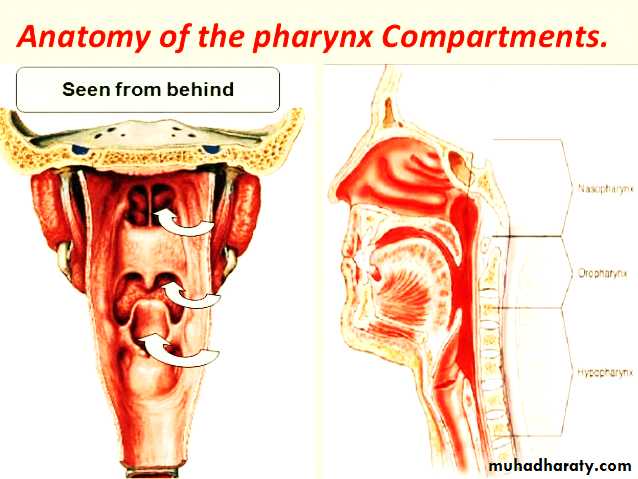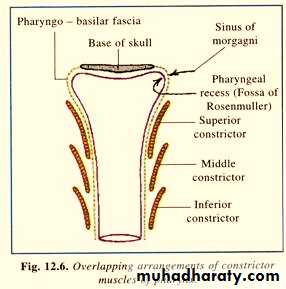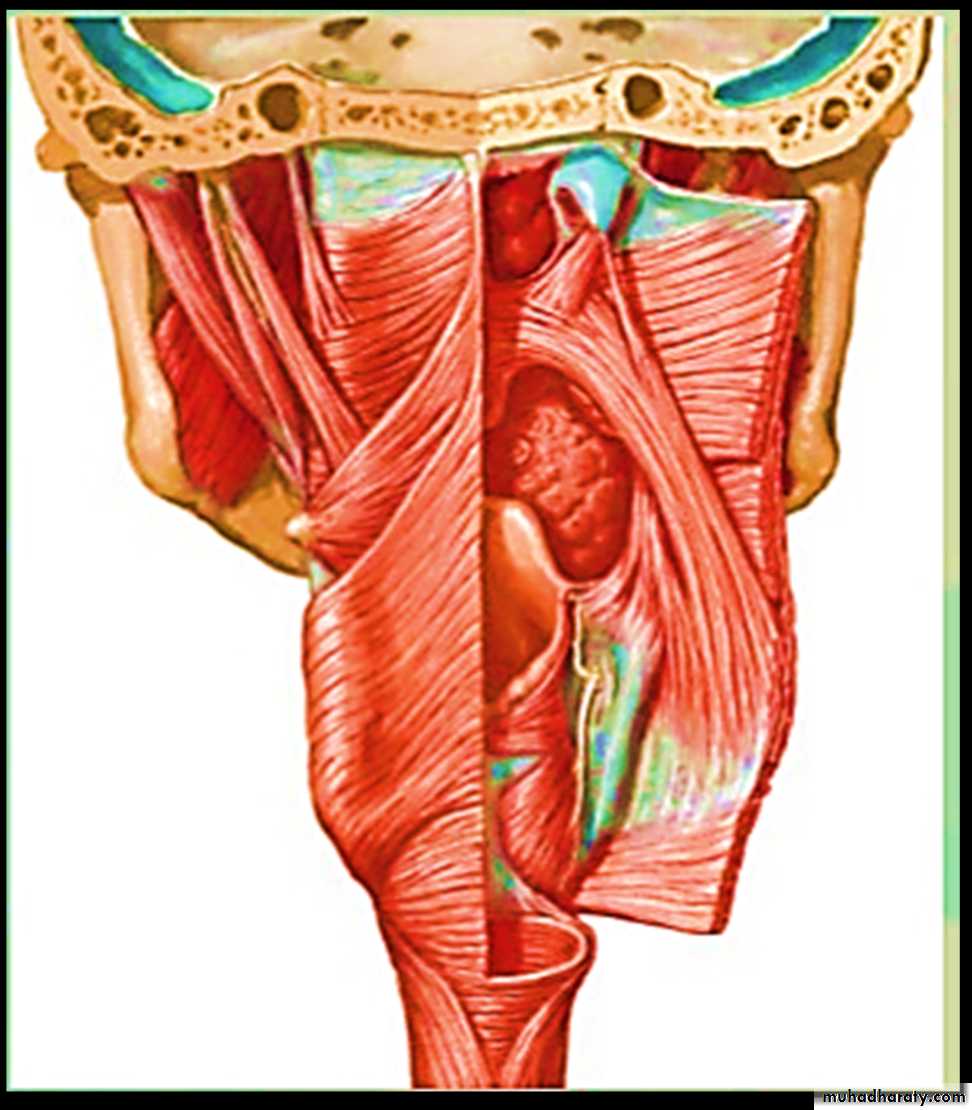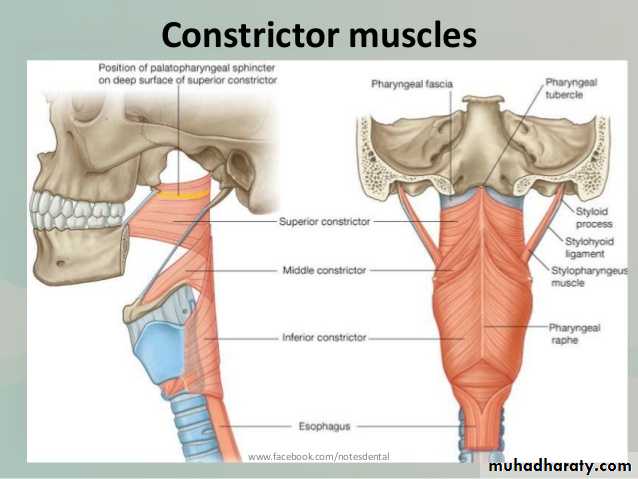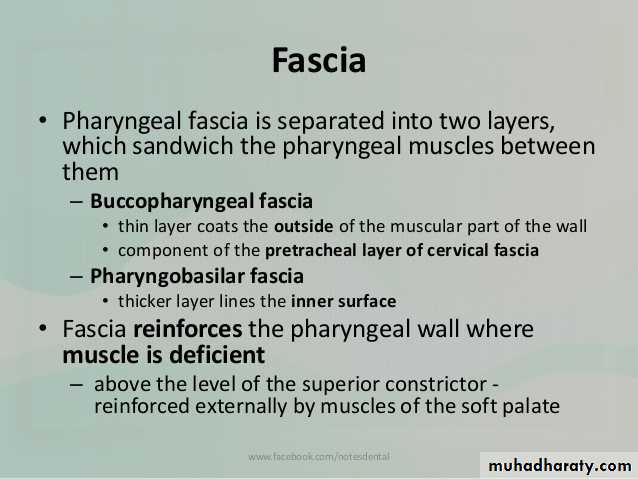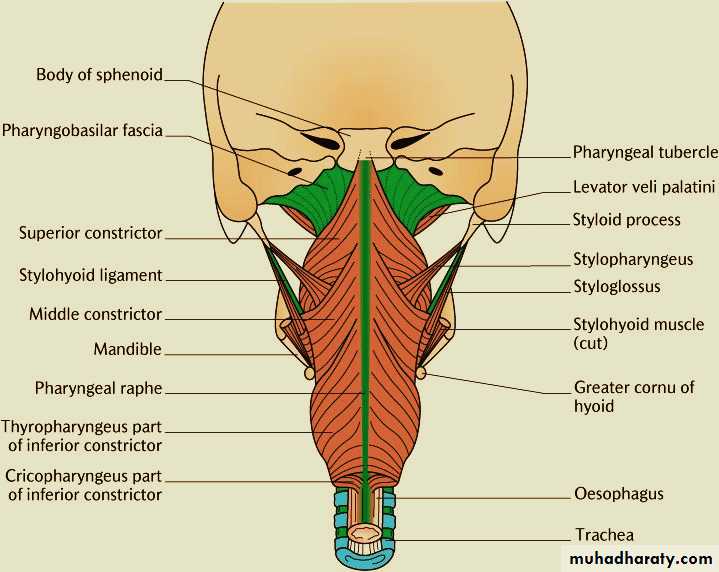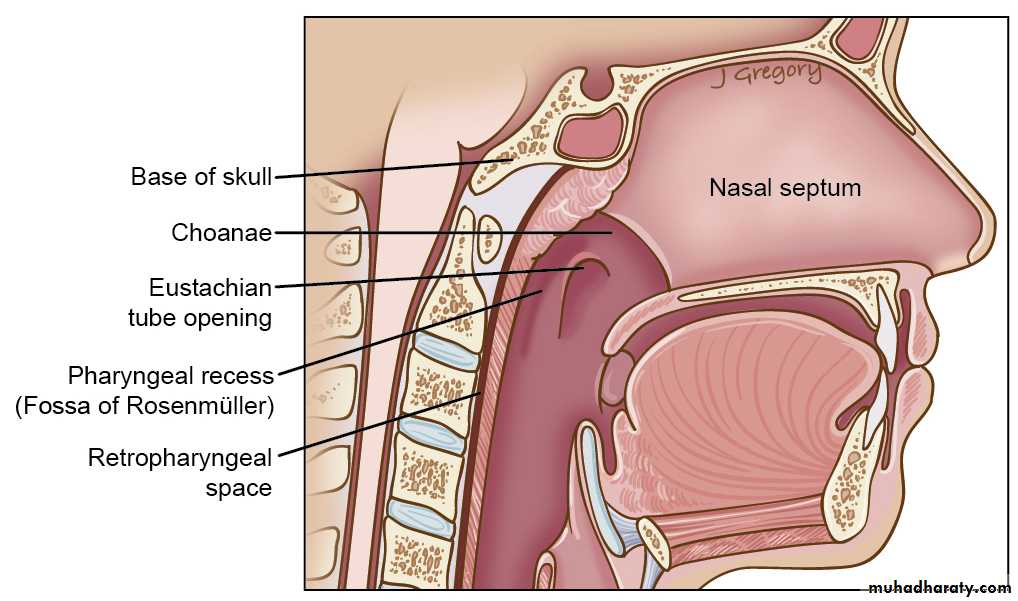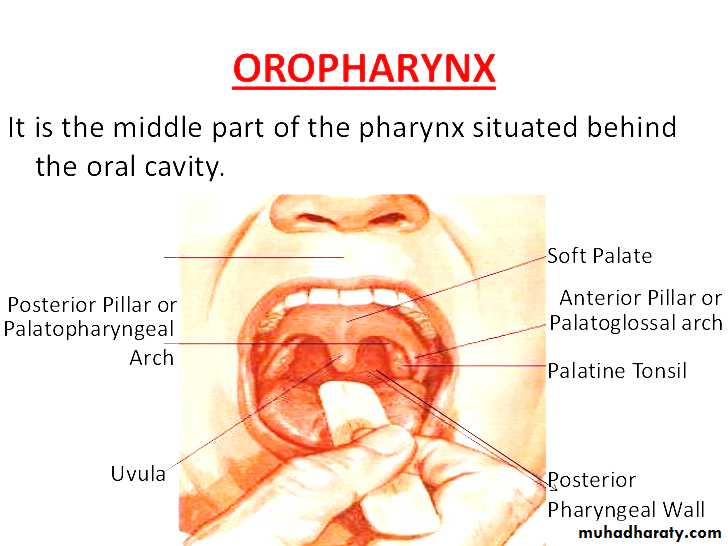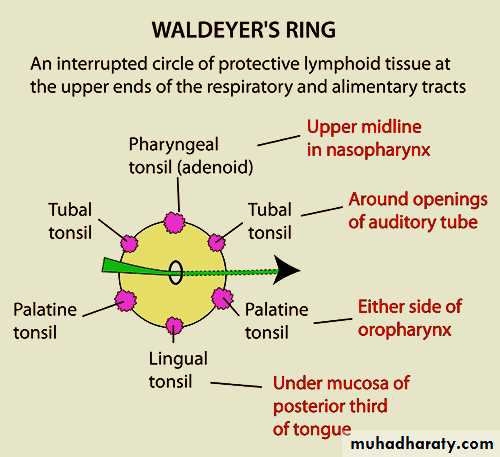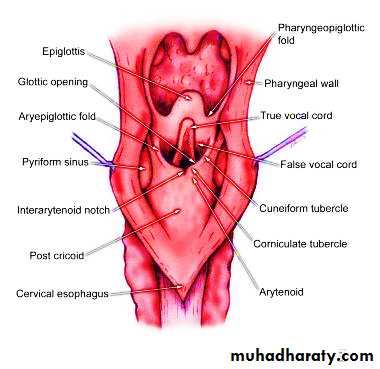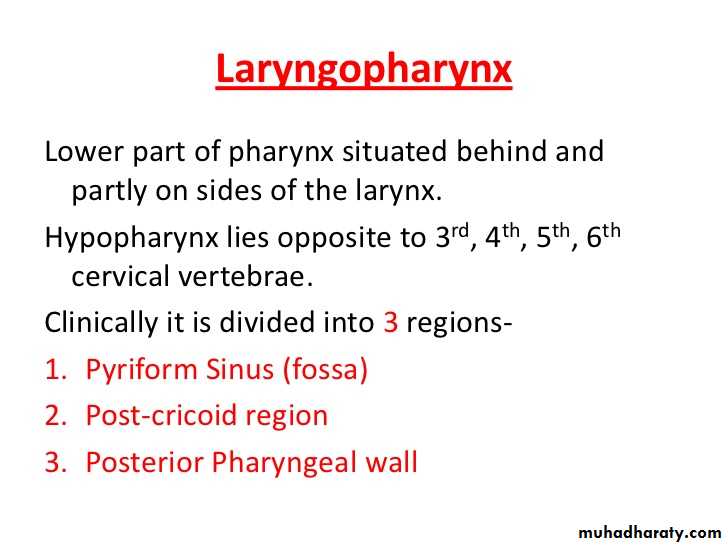PHARYNX
ByDr. Adel sahib AlMayaly
introduction
It is a membrano-muscular tube that extends from the base of skull to lower border of cricoid cartilage anteriorly & 6th cervical vertebra posteriorly.The pharynx is situated behind the nasal cavities, the mouth, and the larynx.
Thus; it is divided into Nasal , Oral & Laryngeal parts.
The pharynx has a musculomembranous wall, which is deficient anteriorly.
Anterior wall of pharynx.
ThusSeven cavities communicate with the pharynx:
Two nasal cavities
Two tympanic cavities
Mouth
Larynx
Esophagus
Wall of pharynx
A- Mucous membrane:-1- Nasopharynx: respiratory epithelium.
2- Oropharynx:- stratified squamous epithelium.
3- Laryngopharynx:- stratified squamous epithelium.
B- Pharyngobasilar fascia:- to reinforce the gap between the muscles
Wall of Pharynx
Muscles of the Pharynx:- Two groups according to the orientation of muscle fibres
1- constrictor muscles:- outer circular layer
They are found paired in the pharyngeal wall.
They constitute the principal components of the pharyngeal wall.
They are arranged in superior- inferior sequence.
Their origin variable while insertion is common to pharyngeal raphe posteriorly.
Muscle layer
Constrictor (outer)1- Superior constrictor m.
2- Middle constrictor m.
3- Inferior constrictor m.
Longitudinal (Inner)
1- Stylopharyngeus m.
2- Palatopharyngeus m.
3- Salpingopharyngeus m.
Constrictor muscles
Cavity of Pharynx
3 parts;-1- Nasopharynx.
2- Oropharynx.
3- Laryngopharynx (Hypopharynx).
Nasopharynx
This part lies
1- Behind the nasal cavities.
2- Above the soft palate.
3- Below the base of skull.
4- In front the 1st cervical vertebrae.
Its function is entirely respiratory.
Features of Nasopharynx
1- Nasopharyngeal tonsil (Adenoid).2- Auditory tube ( Eustachian tube).
3- Tubal Elevation.
4- Pharyngeal recess (Fossa of Rosen Muller).
Oropharynx
This part lies behind the oral cavity.Its floor is posterior 1/3 of tongue.
Posterior wall is C2,3 vertebrae.
Lateral wall is Palatine tonsils with its pillars.
Palatine tonsil
Is a collection of lymphoid tissue that occupies the tonsillar fossa & projects into the oropharyngeal cavity.Tonsillar fossa lies between:-
1- Palatoglossal arch anteriorly.
2- Palatopharyngheal arch posteriorly.
Each arch is a mucosal fold that overlies the corresponding muscle.
The space between the two palatoglossal arches is called Oropharyngeal isthmus.
Palatine tonsil
is a large collection of lymphoid tissuewhich projects into the oropharynx from the tonsillar fossa
The floor of the fossa (lateral wall) is the lower part of the superior constrictor.
The medial surface is covered by pharyngeal mucosa
The lateral surface is covered by fibrous tissue which forms the tonsillar capsule.
(Waldeyer’s ring)
The palatine, lingual, pharyngeal and tubal tonsils collectively form an interrupted circle of lymphoid tissue (Waldeyer’s ring) at the upper end of the respiratory and alimentary tracts.Neurovascular supply of Tonsil
ARTERIAL :- Tonsillar branch of the Facial Artery.Venous Pharyngeal plexus of veins
NERVOUS: Glossopharyngeal N.
Laryngeal part (The laryngopharynx)
It extends from the upper border of theepiglottis to the level of the lower border of the cricoid cartilage (C6 vertebra).
It lies behind the opening of larynx via laryngeal aditus
Laryngopharynx
Sensory N. Supply of Pharynx
1- Nasopharynx:- Trigeminal nerve.2- Oropharynx:- Glossopharyngeal nerve.
3- Hypopharynx:- Internal laryngeal nerve branch of vagus nerve.
Blood Supply Of Pharynx
1- Ascending Pharyngeal artery:- branch of external carotid artery.2- Tonsillar branch of Facial artery.
3- Lingual artery.
4- Maxillary artery.



